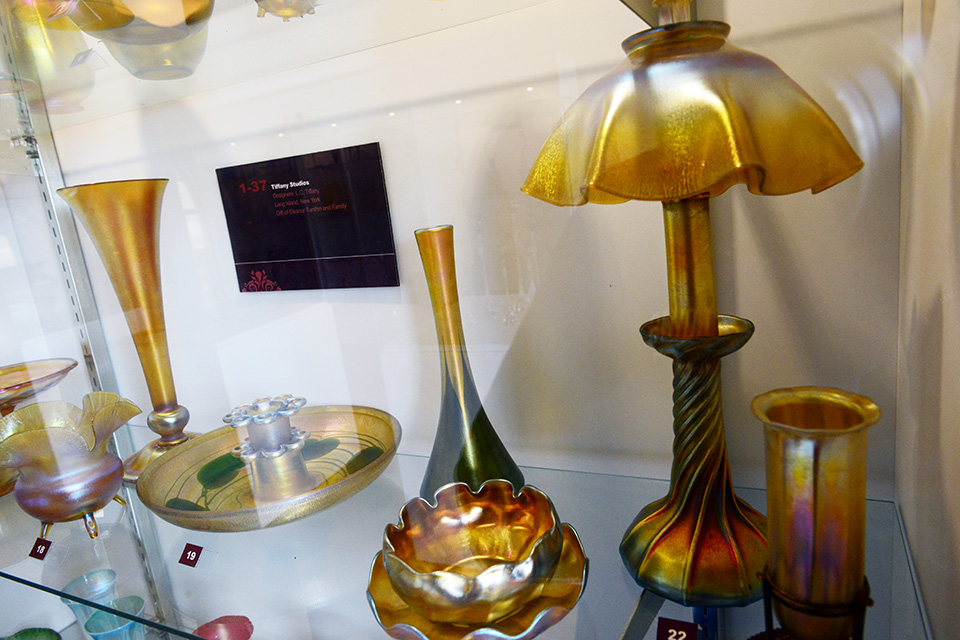The historic Samuel Cupples House on the campus of Saint Louis University, serves as a gallery for SLU's collection of fine and decorative art dating from before 1919.
The Eleanor Turshin Glass Collection is shown throughout the house, which was once the home of wealthy St. Louis entrepreneur Samuel Cupples. Construction of the house and stables began in 1888 and the house was completed in 1890.
Acquired by SLU in 1946 and originally known to students as the Chouteau House, the building was used as a student center — the basement once hosted a bowling alley and bar — and for academic advising, among other functions. In 1973, Maurice McNamee, S.J. took on the task of restoring the house to its original appearance.
Cupples House was placed on the National Historic Register in 1976.
The McNamee Gallery, located on the lowest level of Cupples House, hosts exhibitions of art by SLU students and faculty from the Department of Visual and Performing Arts as well as visiting artists.
Walk-in visits to Cupples House are welcome for groups of all sizes.
Rooms
Fireplaces
To construct in today's currency
Cost for SLU to buy the home in 1946
 Art Nouveau was an important artistic movement that represented the changing tastes
and times at the turn of the century. It appeared in the beginning of the 1900s and
emphasized the beauty of everyday objects; there are very few nonfunctional pieces.
Art Nouveau rejected the classical approach to art, which stresses order, restraint
and symmetry. Instead, the movement features asymmetric design, stylized interpretations
of nature and organic flowing lines.
Art Nouveau was an important artistic movement that represented the changing tastes
and times at the turn of the century. It appeared in the beginning of the 1900s and
emphasized the beauty of everyday objects; there are very few nonfunctional pieces.
Art Nouveau rejected the classical approach to art, which stresses order, restraint
and symmetry. Instead, the movement features asymmetric design, stylized interpretations
of nature and organic flowing lines.